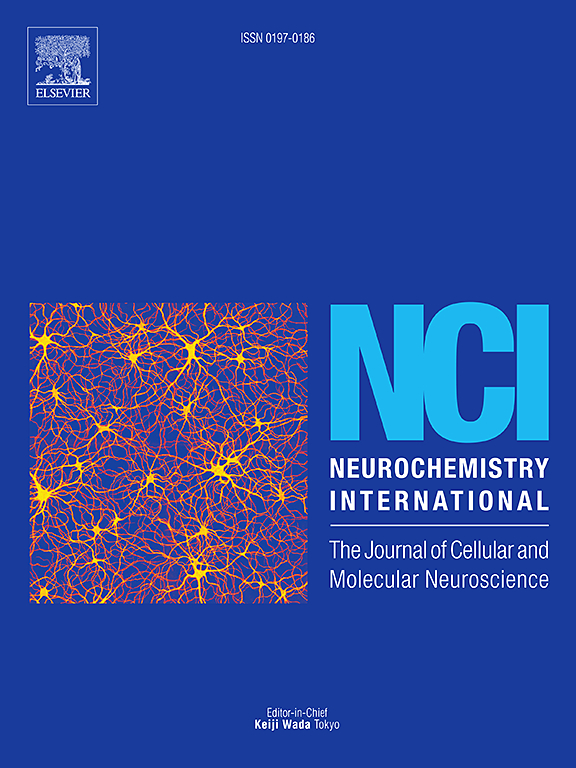Reduction in presynaptic glutamate release and the prevention of glutamate excitotoxicity by lupeol in rats
IF 4
3区 医学
Q2 BIOCHEMISTRY & MOLECULAR BIOLOGY
引用次数: 0
Abstract
This study aimed to investigate whether lupeol, a pentacyclic triterpenoid, affects glutamate release in isolated nerve terminals (synaptosomes) from the rat cerebral cortex and whether lupeol affects the excitotoxicity induced by kainic acid (KA) in rats. In rat cerebrocortical synaptosomes, lupeol reduced glutamate release in a manner that could be blocked by extracellular Ca2+-free medium or P/Q-type Ca2+ channel antagonism. The synaptosomal membrane potential was not affected by lupeol treatment. Docking data also revealed that lupeol formed a hydrogen bond with amino acid residues of the P/Q-type Ca2+ channel. In the KA-induced acute excitotoxicity model, lupeol pretreatment ameliorated cortical neurodegeneration and downregulated the expression of glutamate release-related proteins vesicular glutamate transporter 1 (VGLUT1) and phospho-synapsin I, thereby reducing the glutamate levels in the cortices of rats. Our findings suggest that lupeol may exert a neuroprotective effect by reducing glutamate excitotoxicity through the inhibition of presynaptic glutamate release. These results indicate that lupeol could be a promising candidate for the treatment of glutamatergic excitotoxicity and related neurological diseases.
减少大鼠突触前谷氨酸释放和预防谷氨酸兴奋毒性。
本研究旨在探讨lupeol(一种五环三萜)是否影响大鼠大脑皮层离体神经末梢(突触体)谷氨酸释放,以及lupeol是否影响kainic酸(KA)诱导的大鼠兴奋毒性。在大鼠脑皮质突触体中,lupeol减少谷氨酸释放的方式可能被细胞外无Ca2+介质或P/ q型Ca2+通道拮抗剂阻断。lupeol治疗对突触体膜电位无影响。对接数据还显示,lupeol与P/ q型Ca2+通道的氨基酸残基形成氢键。在ka诱导的急性兴奋性毒性模型中,lupeol预处理可改善大鼠皮层神经退行性变,下调谷氨酸释放相关蛋白vesicular glutamate transporter 1 (VGLUT1)和phospho-synapsin I的表达,从而降低大鼠皮层中的谷氨酸水平。我们的研究结果表明,lupol可能通过抑制突触前谷氨酸释放来降低谷氨酸兴奋毒性,从而发挥神经保护作用。这些结果表明,lupeol可能是治疗谷氨酸能兴奋性毒性和相关神经系统疾病的有希望的候选者。
本文章由计算机程序翻译,如有差异,请以英文原文为准。
求助全文
约1分钟内获得全文
求助全文
来源期刊

Neurochemistry international
医学-神经科学
CiteScore
8.40
自引率
2.40%
发文量
128
审稿时长
37 days
期刊介绍:
Neurochemistry International is devoted to the rapid publication of outstanding original articles and timely reviews in neurochemistry. Manuscripts on a broad range of topics will be considered, including molecular and cellular neurochemistry, neuropharmacology and genetic aspects of CNS function, neuroimmunology, metabolism as well as the neurochemistry of neurological and psychiatric disorders of the CNS.
 求助内容:
求助内容: 应助结果提醒方式:
应助结果提醒方式:


